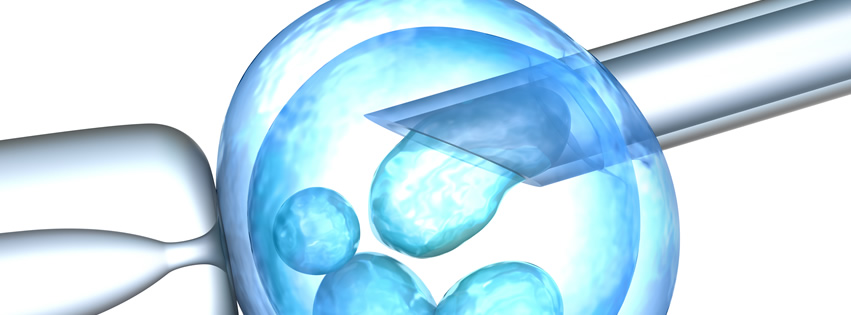
PGS, prenatal genetic screening, is a general term for testing the chromosomes of the embryo or testing for a specific genetic carrier state in the embryos.
We accomplish this through a trophectoderm biopsy. It is a technique that entails taking a sample of the cells from the part of the embryo destined to become the placenta or trophectoderm. The biopsy is performed under high-power magnification using a micro-laser to separate some of the cells from the embryo. Those cells are then sent for genetic studies. However, we do not touch the group of cells that will become the fetus.
In experienced hands, this technique is safe and will not damage the embryo or affect its ability to implant in the uterus. In fact, the pregnancy rates resulting from chromosomally normal embryos are much higher than those selected based on their appearance alone. We have been performing this procedure since 2014. Our embryologists have extensive experience using the micro-laser for trophectoderm biopsy.
Preimplantation Genetic Screening (PGS) and Elective Single Embryo Transfer
Many, if not most, patients will benefit from PGS under various circumstances. Selecting a chromosomally normal embryo for transfer to the uterus allows for single embryo transfer, thereby minimizing the risk for multiple pregnancies that are a common result of transferring two or more embryos into the uterus. Multiple-embryo pregnancies are complicated by premature labor, premature delivery, cesarean delivery, newborn maturity, and increased risk to the mother in developing gestational diabetes and pregnancy-induced hypertension.
Recurrent Miscarriage and Failed IVF Cycles
Most miscarriages and implantation failures are due to chromosomally abnormal embryos. Therefore patient's with recurrent miscarriages and previously failed in vitro fertilization cycles may benefit from PGS and trophectoderm biopsy.
Genetic abnormalities are very common in the human embryo; 50% of embryos may be chromosomally abnormal, even in younger patients. As the patient ages, particularly over the age of 35, these genetic abnormalities increase, with a natural decrease in pregnancy rates and an increase in miscarriage rates. There is also an increased risk of congenital anomalies in newborns, such as trisomy 21 or Down syndrome. One may view this technique as a way of avoiding the transfer of chromosomally abnormal embryos.
Preventing Genetic Disorders
If both prospective parents are carriers of serious genetic traits, such as cystic fibrosis, that can have a detrimental effect on their future children, we can offer special screening techniques. A reproductive genetics laboratory can develop a probe to detect the particular trait in the embryo, thereby avoiding the transfer of an embryo with two copies of the genetic trait that will cause the condition. Also, the laboratory will perform standard genetic screening so we can select a chromosomally normal, non-affected embryo for transfer.
Next Generation Sequencing (NGS)
We recommend the most up-to-date chromosome testing, NGS, or next-generation sequencing at Westchester Fertility. NGS allows complete sequencing of the chromosomes after they are amplified in the reproductive genetics laboratory. This technique will detect mosaicism, a condition in which two or more cell lines are present in the trophectoderm tissue biopsy. Mosaicism suggests that the fetal genetic status may also be similarly affected and is a cause for failure of implantation and miscarriage. An earlier genetic technique called array comparative genomic hybridization (aCGH) does not detect mosaicism, giving the impression of a chromosomally normal embryo. With mosaicism, the embryo will often not implant or result in a miscarriage.
Frozen Embryo Transfer
Because NGS requires several days for results, We immediately cryopreserve the embryos after the biopsy and prepare the patient for a transfer in the next cycle. No additional hormones or stimulation of the ovaries are needed to prepare the uterus. Earlier cryopreservation techniques resulted in comparatively lower pregnancy rates over fresh transfers. Vitrification, a rapid freezing process in liquid nitrogen used in our laboratory, results in excellent embryo survival in the hands of our experienced embryologists. The transfer of a chromosomally normal embryo into a uterus prepared in a controlled hormonal environment, avoiding the high estrogen levels of a stimulated cycle, results in pregnancy rates of 70-80%, far surpassing that of fresh, untested embryo transfers in the stimulation cycle.
For more information about preimplantation genetic screening, read an ASRM fact sheet.

